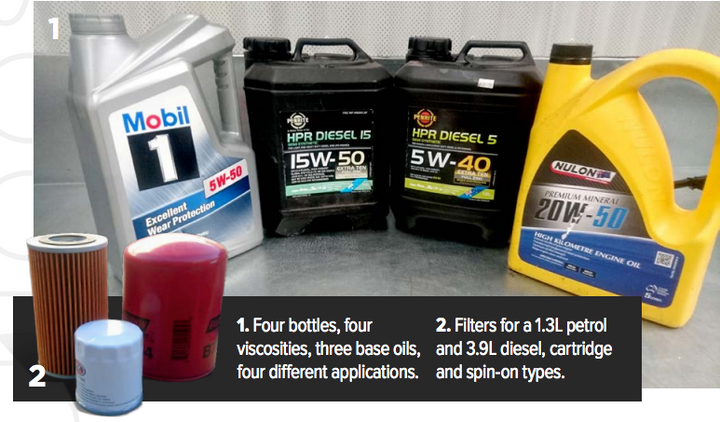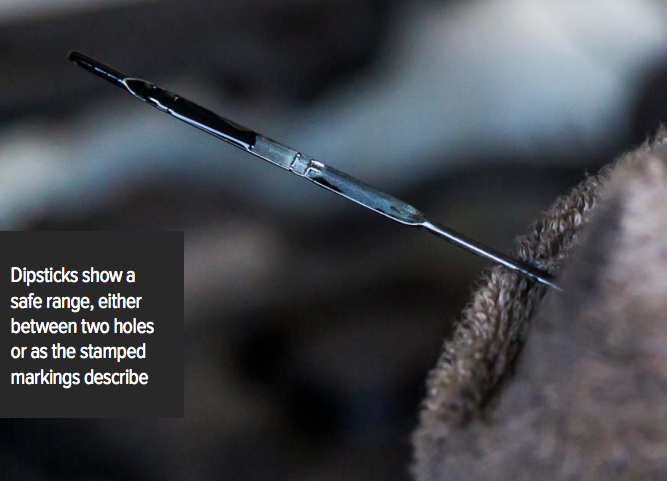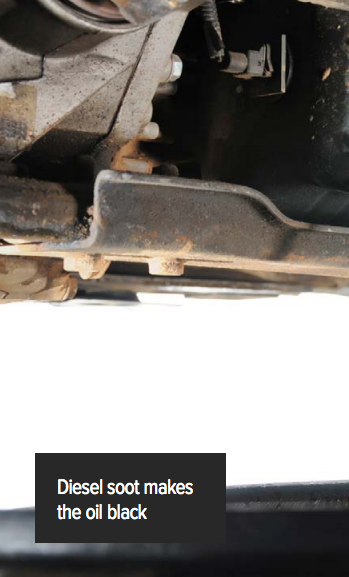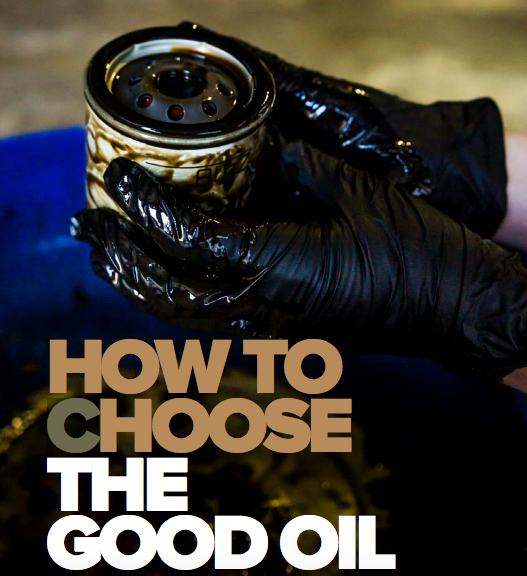Article from Unsealed
HOW OFTEN, AND WHEN DO YOU CHANGE OIL?
There’s a thing, that comes with every new car and most second-handers, that is rarely noticed in the glovebox or console. It’s the user manual. A magnificent multi-lingual technobabbling brochure about how awesome your car is, which button does what and HOW TO LOOK AFTER YOUR CAR. There’ll be a section just for maintenance including oil changes. Now we did mention technobabble. Most makers differentiate between normal and severe use. You may be surprised to know that both sitting in traffic idling away and towing heavy loads on dusty roads are considered severe use. Oil change intervals are reduced with severity of use, and as keen 4X4ers, how we like to use our vehicles sits in the severe use bracket. Some older vehicles ask for an oil change every 5000km, newer cars may be over 15,000km between changes.

WORDS BY MARK KENDRICK. IMAGES BY WES WHITWORTH + PCM LIBRARY.

While kilometres or lapsed time intervals are good, you can also do the ‘sniff’ test. Oil should smell, well, oily, or slightly burnt at worst. This is normal through the life of the oil. If you’re getting a strong carbon smell then the oil is likely getting too hot, which is bad news for your engine. You need to find out why it’s getting too hot – watch your engine temperature gauge and take it to your mechanic. Even worse is a rotten egg smell. This is oxidised oil, which has lost most of its desirable qualities and gained a few very bad qualities. Change the oil, saving a sample for analysis, and book it in to a mechanic ASAP! CHOOSING
SEVERE USE
Severe use includes driving where any of the following happens:
- Most trips involve extensive idling (stop/start traffic)
- Most trips are less than 15km in length
- The vehicle is frequently driven in dusty environments (aka most 4X4 trips)
- The vehicle is frequently used for towing a trailer, or has a roof rack fitted
- The vehicle is used for delivery service, taxi, police or similar commercial use.
CHOOSING VISCOSITY
Again, the user manual should be your first port of call; if you don’t have one, have made an engine swap or can’t read (so this article won’t help you anyway), major oil companies have tech support/advice hotlines you can call and get expert advice from (albeit only for that brand’s products). Finally, searching the car manufacturer or model’s more popular online forums will likely net a few varying answers that may somewhat help.
Oil may be labelled as a two-part code, such as 15W-40, which means it is a multigrade where the 15W represents the viscosity at a chilly 0° Fahrenheit, while the 40 represents the viscosity at 100°C. A horrible mix of units! Oils with a code such as SAE30 are monograde, so they have a viscosity of 30 at 100°C. Monogrades are quite rare in automobile use these days, but new owners of ex-Army Land Rovers still get caught out occasionally (and should use 15W-40 anyway)!
Environmental factors such as ambient temperature plays a role, with extreme cold or hot calling for different viscosity properties of oil. Most car manufacturers specify a range of oils based on environmental conditions to select from.


SYNTHETIC VERSUS MINERAL
Synthetic oils are expensive. They take a lot more refining to manufacture, so much so that the compounds don’t resemble traditional oil anymore – hence being tagged synthetic. This means they are also better tailored to suit the specific application. Newer cars with longer service intervals, finer tolerances and higher stresses often require synthetic oil whereas old carburetted petrol or indirect injection diesel engines will just about handle whatever you can pour into them. If a car calls for synthetic oil, use it; if the car doesn’t specify then mineral will be good enough but synthetic can improve engine longevity without any detrimental effects.
HOW MUCH IS REQUIRED?
Measure what comes out! Okay, we admit that’s not really practical or accurate, especially when half of it runs down your arm. The best source is still your car’s user handbook. Remember, the sump takes most of the oil, but the oil filter also takes a share – and not all can be prefilled. So you need to fill as per recommendations, then run the engine for a minute and recheck, topping up if needed. What happens if you pour too much oil in? Best case scenario is absolutely nothing or you might find the engine blows a bit more smoke, but the real risk is a runaway engine where the engine is fuelled by the oil.

SPEAKING OF … WASTE OIL DISPOSAL
Don’t put it in the bin, and whatever you do don’t pour it onto the ground! Pour the waste oil into the old oil bottles or drums and take it to your local waste management centre or transfer station. Bag your oil filters and rags – some stations also accept them. Some transfer stations and rubbish tips make you leave the bottle/drum so don’t get too attached to it. Your local council will list suitable disposal locations on their website or you can enquire by phone. If you happen to have spilt oil on the ground, there are commercial products you can buy to soak up the spill, but many use kitty litter or sawdust to soak it up. Clean the concrete with dish detergent, boiling water and elbow grease applied via stiff scrubbing brush.



